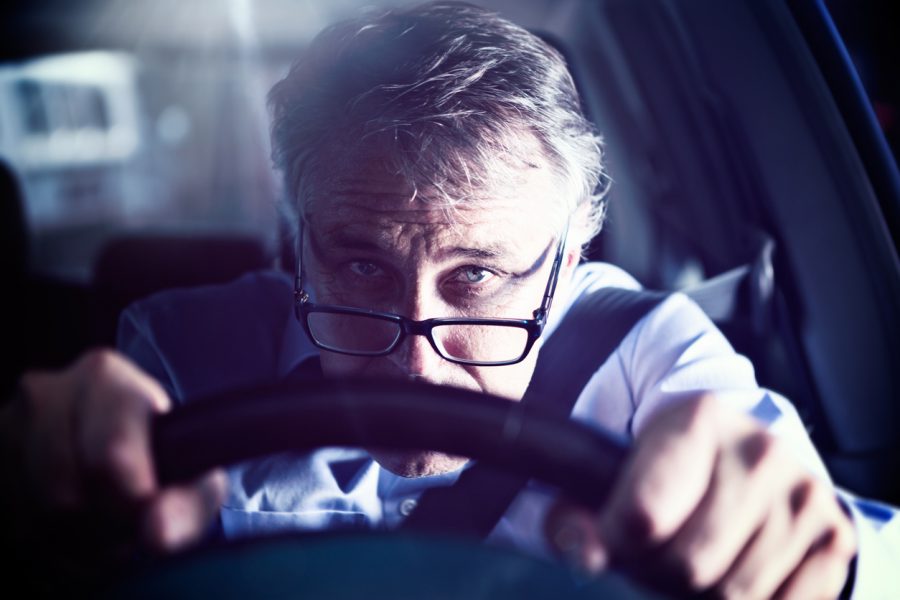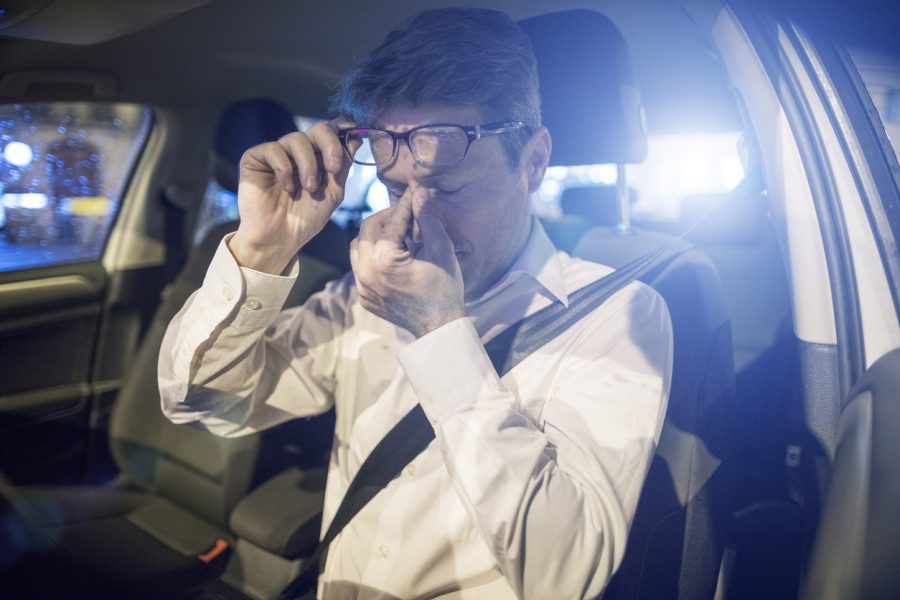
The clocks going back sees November registering a dramatic increase in the number car crashes in the UK. It’s caused by more people driving in the dark combined with the weather getting worse.
But one thing drivers can do to protect themselves and other road users is have their eyes tested. Read on to find out why dodgy eyesight is a significant contributor to road crashes.
How many UK drivers have poor eyesight?
Considering how important eyesight is for driving there are many more drivers with inadequate eyesight than is ideal. According to the DVLA, poor eyesight caused 4534 driving licences to be revoked in 2019. That’s an eighth of the total number of driving licences taken away for health reasons.
However, the results of a survey released by Direct Line earlier this year showed that a fifth of drivers (21 per cent) haven’t had their eyes tested in two years. That’s around 8.9 million drivers. Three per cent have never had their eyes tested at all.
Earlier Direct Line research found that car owners who need glasses or contact lenses but drive without them could be four times more likely to crash. Yet the same study discovered that a fifth (21 per cent) of drivers who needed their eyesight correcting always drove without their glasses or lenses.
Why driving with poor eyesight is so bad
Being able to see is obviously one of the fundamentals of driving. But if you have undiagnosed eyesight problems it can cause problems, particularly when driving in the dark.
Astigmatism is one example. According to optometrists it affects around 800,000 people in the UK. It is when the eyeball is oddly shaped causing light rays to be bent incorrectly in the eye. It means drivers are more likely to be blinded by oncoming lights. However, it is a condition that an optometrist can treat.
Are car lights getting brighter?
All car lighting must conform to certain standards and operate within certain parameters. But those standards don’t regulate against brightness. And with car makers adopting LED (Light Emitting Diode) lighting because it weighs less, is more reliable and saves energy in addition to providing a crisp white light, headlights are getting brighter.
On top of that, LEDs provide a very precise light. They tend to be smaller and that means the eye can focus more of the incoming light on the retina.
So brighter car lights are good on one hand because they enable drivers to see more of the road ahead. On the other they’re bad because they’re more likely to dazzle oncoming road users.
How not to get dazzled
First of all, make sure your screen is clean on the inside. This will stop the smearing that causes reflections and makes it harder to see through the glare of oncoming lights.
When a car approaches you in the dark, don’t stare straight at its headlights. While still watching where you’re going, look towards the left-hand edge of the road. If you can, focus on the white line so that you don’t run off the road. Should the glare from oncoming lights be too blinding, slow down. Just don’t do so suddenly and unexpectedly or the vehicle behind might run into you.

Do night driving glasses help?
Do a search for night-driving glasses on the internet and you’ll be bombarded with companies selling what look like yellow-tinted sunglasses. These products use gentle tinting to diffuse the effects of the white lights many modern cars are fitted with. Many of the glasses are oversized so they can be worn over a driver’s regular spectacles.
Although many drivers swear these are effective at reducing glare, there’s no scientific proof to back that. And rather like wearing sunglasses at night, some safety experts claim they actually reduce visibility in certain circumstances. Spec Savers says: “The important thing to remember is to not use tinted glasses at night as this can actually make your vision worse.” However, many opticians will sell anti-glare lenses for glasses. It might be worth investigating them the next time you have an eye test.
I would appreciate you using right hand drive cars in your photos after all we are in the UK and we drive on the left.
It’s not the clocks going back that’s a hazard, it’s the LED lights. They are far too bright and sharply focused. Oncoming drivers are subject to sharp transitions from dark to super piercing bright and our eyes were never meant to cope with that. Older lights had “splatter” (softer focus) and weren’t as bright so our eyes weren’t as taxed.
It amazes me how, with all our “safety” regulations, that governments the world ober have completely failed in this important area.
As for the clocks going back. It’s a good idea because it gives you more light in the morning (better for kids going to school) AND the roads can use that extra hour to help thaw overnight frost…